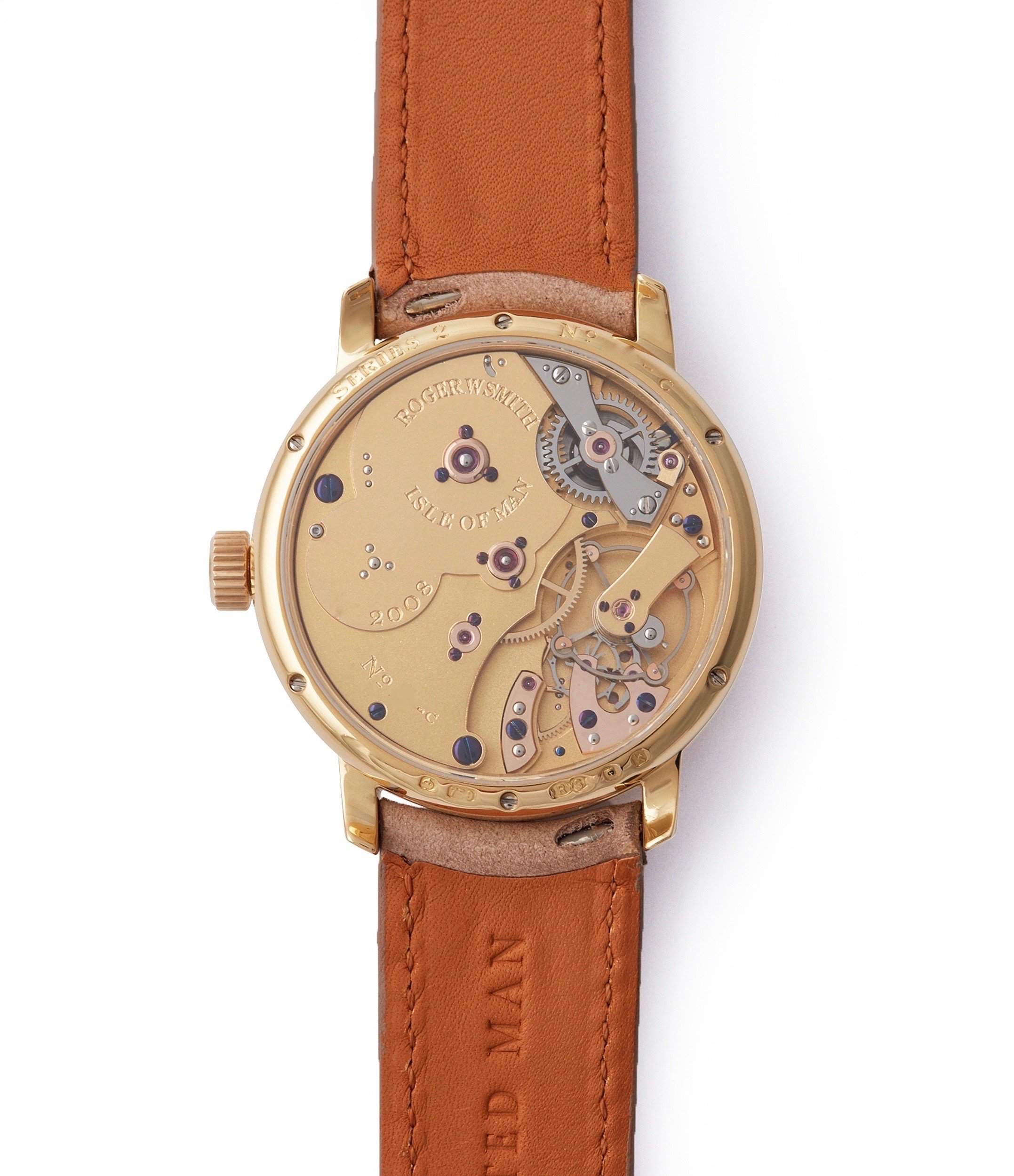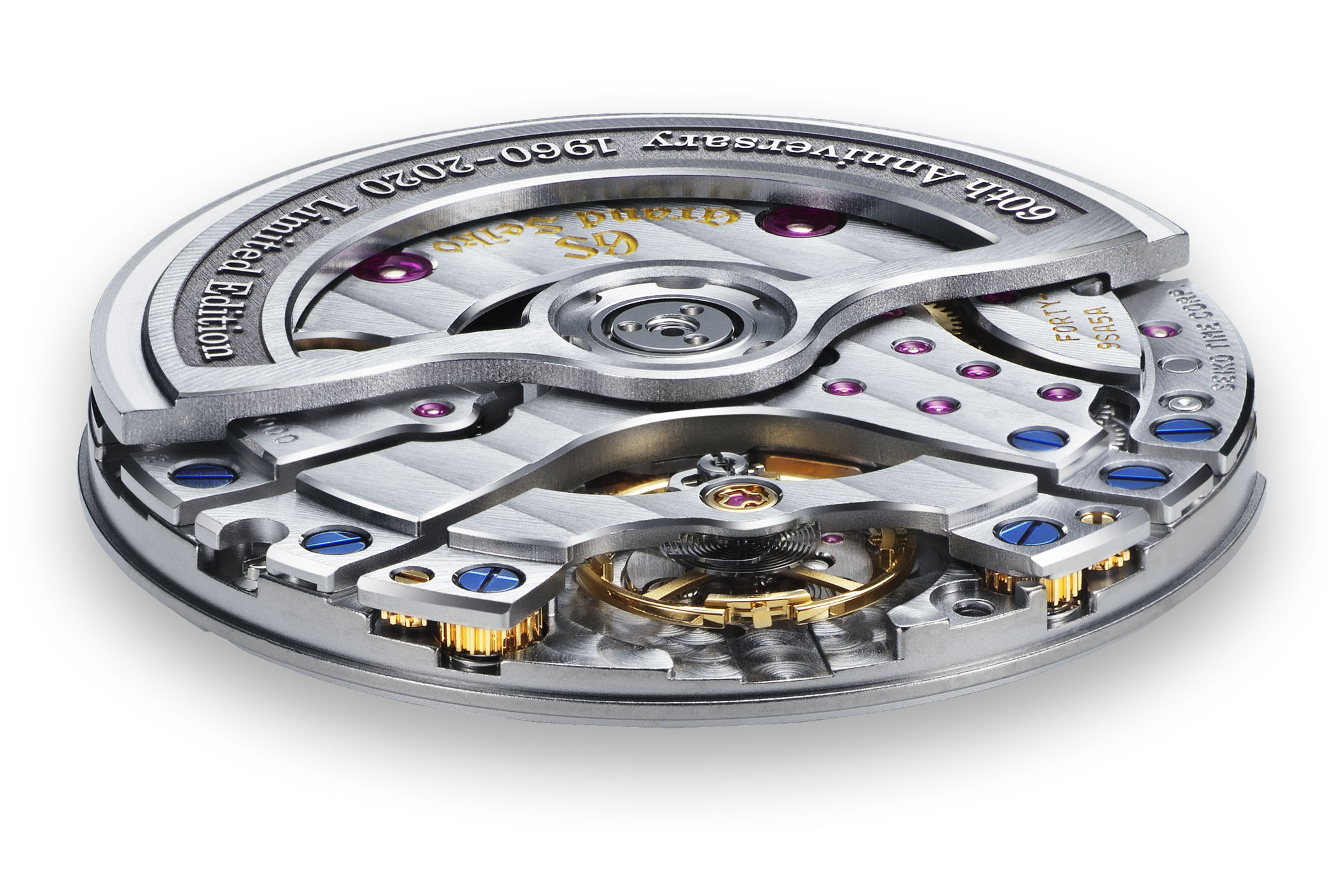IN-DEPTH: An independent watchmaker explains why the new Grand Seiko 9SA5 caliber is so remarkable
Reuben SchootsEditor’s note: Grand Seiko turned heads at the start of 2020 with the announcement of a brand new in-house movement – the Grand Seiko 9SA5 caliber. It was first launched in the Grand Seiko SLGH002 60th Anniversary Limited Edition, a quintessential yellow gold dress watch from the Japanese watchmaking firm, and it left jaws on the floor with what it had achieved. We saw the 9SA5 caliber again earlier this month in the Grand Seiko SLGH003, this time in a sportier watch in stainless steel that was a statement of intent from Grand Seiko. But what makes this new movement so special?
We thought we’d get an independent watchmaker to answer that question, our friend Reuben Schoots. We first spoke with Reuben in NOW Magazine Issue II, about his journey building a tourbillon pocket watch according to the George Daniels method. By hand. You read that right. The first of its kind in Australia. By hand. So without further ado, here’s Reuben.
Grand Seiko’s new movement, the 9SA5, boasts 80 hours of power reserve, a new movement architecture, a new escapement, a new balance, a beat rate of 36,000 vph, +5 to -3 seconds accuracy per day, oh, and the movement is 15 per cent thinner than its predecessor. Let us take a closer look at what makes the Grand Seiko 9SA5 stand out so dramatically from its predecessors.

Dual Impulse Escapement
Grand Seiko has risen to the creative challenge of developing a new escapement and have come up with their very own Dual Impulse Escapement.
Escapement: the mechanism responsible for controlling the release of a watch’s energy, via the succession of locking and unlocking of the escape wheel, and the transmission of this energy as an impulse to the regulating device (balance wheel). Essentially, without an escapement, a mechanical watch has no means of keeping time.
There are more than 200 known examples of new escapements since the invention of the Lever Escapement by Thomas Mudge in 1754. Only one, George Daniels’ Co-Axial, has made its way into the modern mass-produced wristwatch. Why? When one studies escapements, it becomes immediately apparent the competing demands of uniform impulse, receding friction on impulse, minimising the need for lubrication of the sliding parts and robustness to knocks when worn on the arm, make it an exceedingly difficult endeavour.

The success of the modern Lever Escapement and its universal use in watches can be attributed to its performance, its ease of manufacture and, above all else, there are now no research and development costs, or engineering difficulties to overcome with its use. It is a known quantity.
To understand the characteristics of an ideal watch escapement, we can look at George Daniels’ list of Essential Requirements of a Watch Escapement.
- Impulse to the oscillator at both vibrations of each oscillation.
- Impulse delivered tangentially with minimum friction.
- After impulse the oscillator is to be free to complete the vibration without further contact with the escapement.
- The oscillator to be self-starting while winding the mainspring from the run-down condition
- The oscillator to restart after being accidentally stopped.
Points 1, 4 and 5 can be thought of as the important factors for an escapement to run reliably in a wristwatch, which is subject to severe external forces. Points 2 and 3 are the key factors in the watch’s ability to keep a close rate.

The Lever Escapement satisfies points 1, 3, 4 and 5, which makes it an excellent choice for wristwatch applications, where the reliability of performance and good timekeeping are expected. The Chronometer Detent Escapement satisfies points 2 and 3, making it excellently suited to high-precision timekeepers, like marine or pocket chronometers, where the stability of performance and a very close rate is sought, and is why I have chosen to use a Chronometer Detent Escapement in my tourbillon pocket watch.

Why is point 2 — Impulse delivered tangentially with minimum friction — so important for keeping a close rate? This is the characteristic that enables the Chronometer Detent Escapement to run without needing lubrication and thus it achieves greater stability of rate even if the lubrication deteriorates as opposed to the situation with the Lever Escapement. The Chronometer Detent Escapement gives impulse to the balance tangentially, with receding friction. The Lever Escapement, on the other hand, delivers its impulse to the balance inefficiently, as a sliding action at the impulse faces of the escape wheel, via the pallet forks’ inclined jewel faces.

A reduction in friction also equates to an overall increase in efficiency of the wheel train, allowing the watchmaker to either opt for a longer power reserve with the same size mainspring or, as Roger Smith pointed out (in his recent lecture at the City University of London, The Development of the Mechanical Wristwatch), it also gives the watchmaker the possibility of reducing the power of the mainspring, thus reducing wear at all the pivots, and consequently increasing the time between services.

Now, let’s take a closer look at the action of Grand Seiko’s Dual Impulse Escapement
The new Dual Impulse Escapement impulses the balance in each direction of oscillation of the balance; directly to the balance in one direction and via the lever in the opposite direction, much like George Daniels’ Co-Axial Escapement. However, the “devil is in the details”! If we take a closer look at how the escape wheel delivers impulse to the balance in Daniels’ Co-Axial Escapement, we see that it is via a pushing action with increasing friction as the impulse proceeds, as does Grand Seiko’s Dual Impulse Escapement.
If we, however, compare the way in which impulse is delivered to the lever, via the escape wheel, we find that the Co-Axial Escapement does this as a pushing action, with minimal friction, thanks to its secondary (Co-Axial) wheel and very clever lever jewel configuration. The same cannot be said for the Dual Impulse Escapement, as it still relies on a sliding action to deliver impulse to the lever, and thus, the escapement will suffer from (albeit to a lesser extent, as this sliding friction has now effectively been halved) the same erratic timekeeping as observed with the Lever Escapement, as the lubrication deteriorates. Point 2 then, Impulse delivered tangentially with minimum friction, has been addressed in this new escapement, but it has not been solved. The escapement is, however, thanks to its increase in efficiency, a major contributor to the massive 80-hour power reserve that Grand Seiko have achieved in this 36,000 vph movement.
The Grand Seiko Free-sprung Balance

Grand Seiko opted for an overcoil-type balance spring and have done away with their traditional regulator; this necessitates the inclusion of recessed timing screws on their all-new and most beautiful four armed balance wheels. The exclusion of the traditional regulator, combined with the overcoil and new balance wheel is a setup that is typically found in high-end precision timekeepers from Switzerland.
The hairspring is one of the single most important inventions in precision portable timekeepers. The first examples of watches fitted with balance springs date back to the late 1650s. These watches were fitted with the Verge Escapement, and the addition of the hairspring alone improved timekeeping accuracy from 20 minutes per day, to within 3 minutes per day.
Fast forward 100 years and we encounter John Arnold, a highly renowned 18th century English watchmaker, recognised by many as the first maker of precision pocket watches. Arnold is known for his multitude of important discoveries in precision timekeeping. One of his major contributions to horology is his 1782 patent for Terminal Curves of the Helical Balance Spring. Arnold discovered the method of manipulating the ends of a balance spring to equalise the rates of a watch at different balance amplitudes, by improving the spring’s “isochronous” properties.

Isochronous: an important word in horology. The word is of Greek origin and means to be of equal (isos) time (khronos). A balance spring is isochronous when it causes both the long and the short oscillations of the balance to be performed in the same time. This works by keeping the centre of gravity of the spring on axis.
The mathematics, albeit complicated, required to describe the shape of a hairspring so that the balance system is perfectly isochronous is understood. However, in all escapements there exists some, so called, escapement error. For this reason, it is far more difficult to determine the shape of the perfect overcoil form for a hairspring, as it must be formed to be non-isochronous, whilst cancelling the escapement error. It is for this reason with the 9SA5 movement that we see a new overcoil form, differing from the “Breguet Overcoil” often seen paired with the Lever Escapement. Grand Seiko claim that the new overcoil shape in the Dual Impulse Escapement was computed by running some 80,000 simulations.
Horizontal Gear Train

A new movement architecture, with double barrels in series, all new and very attractive movement bridges, the first time we see a balance bridge from Grand Seiko, made with the watchmaker in mind, with adjustable height for easy endshake adjustment for the balance pivots. Grand Seiko have also managed to reduce the overall movement thickness by 15 per cent, thanks to a new horizontal wheel train layout.
The 9SA5 is perhaps the biggest step forward for Grand Seiko, since their beginnings in 1960. They have made a statement that will solidify them in history as one of the first major watch brands to design and manufacture an escapement in-house that offers superior performance over the Lever Escapement.
Reuben Schoots is an Independent Watchmaker from Canberra, Australia. You can follow his work right here @reubenschoots and check out his YouTube channel here.







